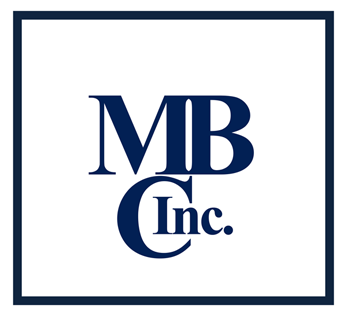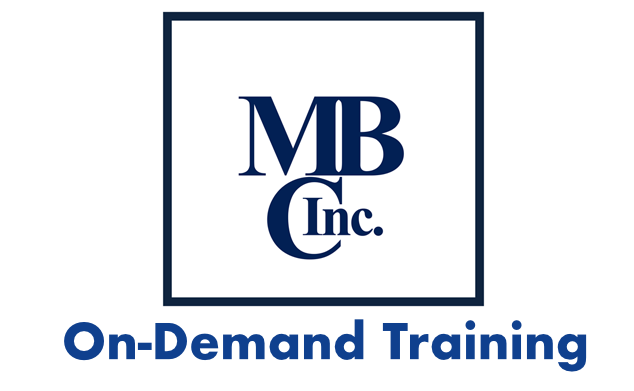Bi-Monthly Informational Guide
MBC, Inc. Quality Tips
Basic Data Collection and Analysis – (It’s About Focus)
Pareto and Trend Chart Combination – (Just Keeping it Very Simple)
Data collection, analysis and use are often difficult processes for many organizations. Nearly every organization collects data, some do limited analysis and use, but often the result is ineffective as a stimulus to continuous improvement. By collecting process information about the product you are manufacturing or the service you are providing, you should be able to identify significant opportunities to improve customer satisfaction, reduce cost or improve efficiency. However, for many organizations the improvement portion suffers or does not exist. It seems impossible to make the transition from data collection across the bridge of analysis and arrive at a new level of improvement.
Consider some very basic, almost simplistic data collection and analysis steps, basic, simple tools that have the potential to produce some significant focus and direction for continuous improvement for your company.
The two tools I would like to discuss and present are Pareto Analysis and Trend Chart. These two, as simple as they are, in tandem are very powerful in focusing a company on specific issues that need attention and are capable of producing significant progress from the perspective of continuous or continual improvement. Let us take these tools in order and have a short discussion about each. You will notice the example charts below, these charts are ‘sample’ data only to help convey the concepts I want to discuss.

Most quality professionals will see this as so simplistic; as will many operations, personnel. My goal is to convey a couple of easy tools, when combined they bring the ability to focus your resources and make progress in a more cost effective manner.
Pareto, collecting data about defects is fundamental and basic. Only a couple of questions need to be considered. Where do I collect data? How do I classify defects? Classification of defects often drives the answer to the question “where do I collect data”. An example can be seen in a simple machining operation. If you produce several dimensions during the machining of a component and the component is process at several different operations defects can occur nearly anywhere.
Dimension “Oversize” could be track as:
“Set-One”
- Oversize at Op 10
- Oversize at Op 20
- Oversize at Op 30, etc.
The defects could be tracked as:
“Set-Two”
- Length L-98 Oversize
- Hole H-107 Oversize
- Locator L-78A – Too High, etc
Alternatively, the defects could be tracked as:
“Set-Three”
- Oversize
- Cracked
- Surface too rough
- Undersize
- Scratched
- Broken
This last set does not take into account which operation number produced the defect.
The organization only needs to figure out which is the method that gives you the level of detail you need to address Root Cause. Are the Root Causes associated with the operation number as in set one above? Are the Root Causes associated with specific characteristics as in set two above? Alternatively, are the defects associated by type as in set three above? Simple data collection questions but questions that must be answered if your data collection is to be effective.

The Pareto gives the organization information, but the leadership still needs to determine which problems are the most important. Importance is not always determined by the problem with the most occurrences. Some problems with lower frequency may have a greater customer or cost impact and should be prioritized above other high incident issues that are low cost or low customer impact problems. Resources assignment should always be a function of Top Management.
The Pareto Chart gives focus; the trend chart of each defect type gives time-oriented performance. By trending each of the high impact issues or problems, you are establishing the historic performance. This also gives a very simple tool to determine the amount of improvement that any problem resolution activities might produce. A drop in the trend line at the time the corrective action was implemented establishes the new performance level. Even if the problem is not a 100% solved, good problem solving may have to address multiple root causes for any specific problem. Until the entire set of root causes are identified and corrected, there will be some remedial amount of non-conformance. You may likely observe the trend line going to zero or near zero over an extended period as each additional corrective action is implemented.
Good Luck! – and – Good Data analysis!
“The involvement of a Committed Management Team is an Unbeatable Combination”
Spread the News
Please forward these editions to others in your organization so they may receive the benefited of this newsletter. Tell other members of your company to go to www.MBCIncorp.com and sign-up for this newsletter by downloading the free report in the upper right corner of the home page.
For additional information about the Internal Audit Process, you may contact the President of MBC, Inc. at anytime; Phone 931.637.1446, or E-mail – Bmartin@MBCIncorp.com
Thank You
Bill Martin – President
MBC, Inc.

